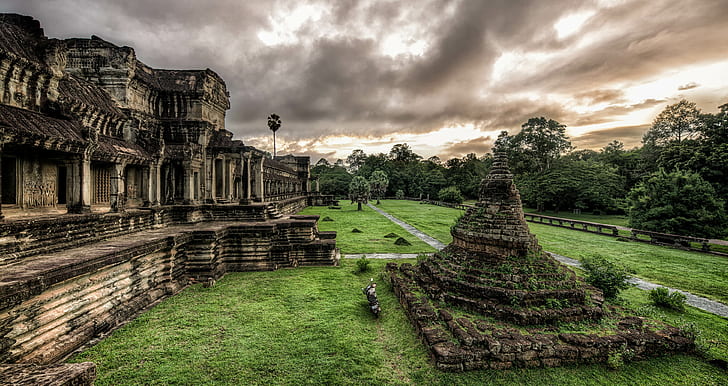By : Sanat Sari Saren
The complex of Angkor Wat, an important city in ancient Cambodia
Photo Source : National Geographic
Return to rightful owners.
Cambodian culture minister, Phoeurng Sackona, In a letter to her British counterpart Nadine Dorries, said that many important Cambodian relics and stolen antiquities had “illegally ended up” in British warehouses and institutions – including the Victoria & Albert Museum and British Museum in U.K.
The letter comes in the latest phase of attempts by Cambodian officials to securely bring the national treasures back home. According to popular Cambodian beliefs. The ancient statues and relics hold the souls of their ancestors.

Photo Source: BBC News
The Victoria & Albert Museum of U.K had previously said that their sources for the Cambodian relics were transparent.
However the claims and evidence presented by Cambodian officials and activists are backed by legitimate insight into the sourcing of the relics.
Cambodian Officials have already presented a list of nearly 100 pieces of stolen antiquities from Cambodia currently housed by the two British museum’s.
Officials have also been pinpointing that many of the stolen relics passed through the hands of a rogue British art dealer, Douglas Latchford, who passed away in 2020.
The looting’s of antiquities.
The Cambodian Ministry of Culture’s chief legal counsel and the head of its investigative team, Brad Gordon, told a press correspondent that the trade of these items should be considered a war crime.
He also expressed his disappointment in the fact that stolen antiquities from Cambodian temples and other historically important sites, ended up in storages of reputed Institutions like V&A Museum and the British Museum – despite lacking permits and export licenses.
He blamed not just the smugglers who desecrate Cambodia’s national heritage by sabotaging temples and monuments, but also the interests of reputed International Institutions to acquire them at any cost.
The Cambodian minister’s letter also reminded the UK that both Cambodia and UK were party to the Hague Convention, which aims to protect cultural property during armed conflicts.
When extremist Khmer Rouge regime held power of the country during 1975 to 1979, they killed nearly two million of their own country men.

Photo source : The Guardian
A large portion of the country stayed under Khmer Rouge control until the late 1990’s. Majority of the looting took place over this period of time.
In living memory.
Unlike other lootings of historically and culturally important relics done during colonial times, the lootings from Cambodian temples and holy sites took place in recent memory – during 1970’s, 80’s and 90’s.
Despite being sourced from conflicts, foreign Museum’s and Institutions pay hefty price’s for acquiring these stolen antiquities.
V&A Museum officials have said that they will respond to the letters sent by Cambodia’s minister of culture and assured if the claims are correct then the statues will be returned with due respect.
The former British Art dealer, Douglas Latchford has been indicted many times by Cambodian citizens and activists for smuggling historical artifacts out of the country.
Coincidentally Douglas Latchford was also an important collector and donator of Cambodian origin antiquities for museums in U.K.
Conclusion.
Many in Cambodia want to see their temples fully restored. As the country simply doesn’t have the infrastructure or resources to take every stolen antiquities back.
But they do have a priority list of the most important pieces they want returned without further bureaucracy. They also say that they don’t intend to empty Western museums of all treasures of Cambodian Origin.

Photo source: History Tv18
What they do want is institutions like the V&A and the British Museum to change their stance – and acknowledge that these objects belong to the people of Cambodia.
Edited by : Sanat Sari Saren.
Published by : Sanat Sari Saren
Read More-https://www.britannica.com/place/Cambodia












